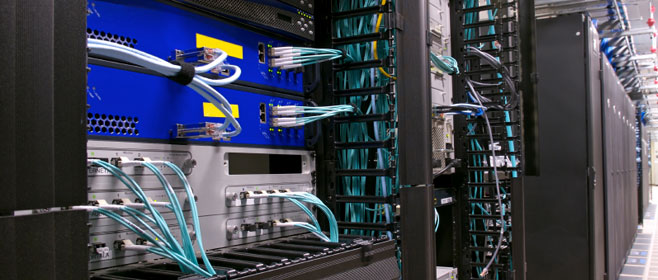
Basics and Benefits of Zone Cabling – Part 1
 Topology or zone cabling design starts with horizontal cables running from patch panels within the TR (telecommunications room) to connections in a ZE (zone enclosure). A ZE can be installed in a ceiling, on a wall or beneath a raised floor. Next, cables originating from ZE connecting blocks or outlets lead to telecommunications outlets inside the WA (work area), equipment outlets, or straight to BAS (building automation system) devices.
Topology or zone cabling design starts with horizontal cables running from patch panels within the TR (telecommunications room) to connections in a ZE (zone enclosure). A ZE can be installed in a ceiling, on a wall or beneath a raised floor. Next, cables originating from ZE connecting blocks or outlets lead to telecommunications outlets inside the WA (work area), equipment outlets, or straight to BAS (building automation system) devices.
Keep in mind ZE connections are creating by modular outlets or punch down blocks. No active equipment is housed in the ZE. For zone cabling deployment, experts recommend installing zone enclosures within a floor space’s populated areas that have the greatest density.
The primary element of zone cabling design is allowing flexibility in client work spaces that enable efficient MACs (moves, adds, and changes). Studies have found that zone cabling can result in considerable savings as opposed to the traditional configuration of home run work area to TR cabling. This is attributable to the fact that MACs on a home run topology need a greater amount of cabling materials and installation time for implementation.
To illustrate the savings mentioned above, we can compare a home run cabling link to a zone cabling link. Both can support a WA outlet positioned 200 ft. from the TR. In this scenario, the ZE is already cabled from the TR with extra ports for supporting additional services and positioned 50 ft. from the WA outlet. Should a second cable be required for deployment, 200 ft. of additional cable will require pulling from the telecommunications room that is designed traditionally, but just 50 ft. will require pulling with a zone cabling design.
Other important benefits derived from the utilization of zone cabling designs are considerably decreased installation and disruption times, along with cable pulling savings of 75%, which will result in significantly improving ROI (return on investment).
Part 2 will continue discussing the basics and benefits of zone cabling.
Progressive Office Cabling
Founded in 1986, Progressive Office’s success has been a direct result of years of commitment to seeking solutions on behalf of our clients in the Washington, D.C. and New York City areas. Efficiently working together, Progressive teams get cabling installed and operating as fast as possible while minimizing disruption and downtime. Call our toll free number (800) 614-4560 today.




 As discussed in Part 1, the improper I can result in poor network performance, maintenance issues, and concealed expenses. Part 2 will discuss four more
As discussed in Part 1, the improper I can result in poor network performance, maintenance issues, and concealed expenses. Part 2 will discuss four more 
 Improperly installed twisted pair
Improperly installed twisted pair 



 An infrastructure for enterprise communications,
An infrastructure for enterprise communications, 
 As mentioned previously, modern
As mentioned previously, modern 